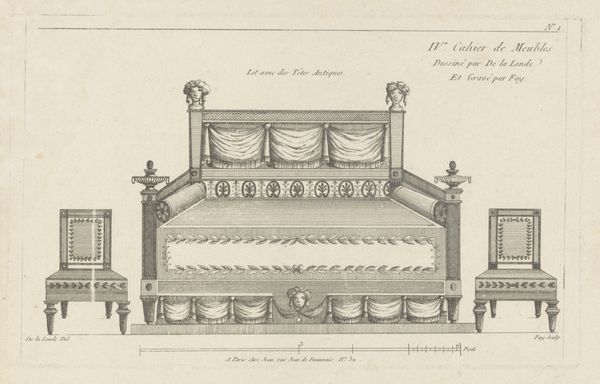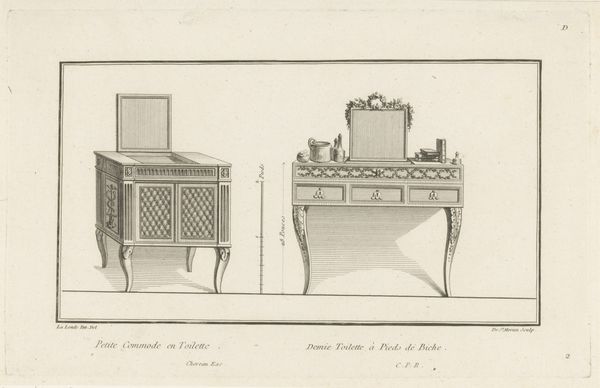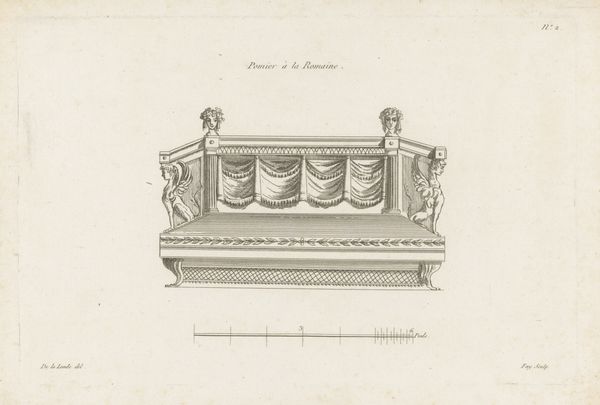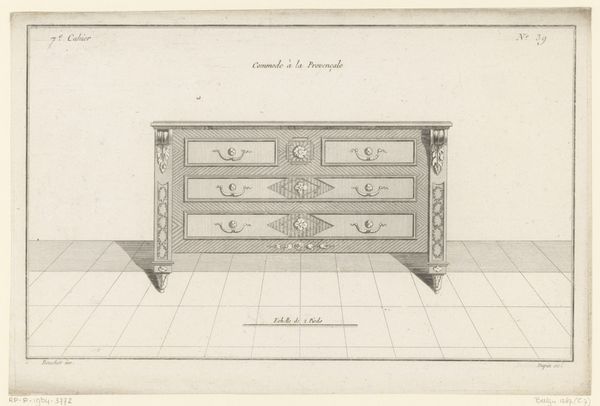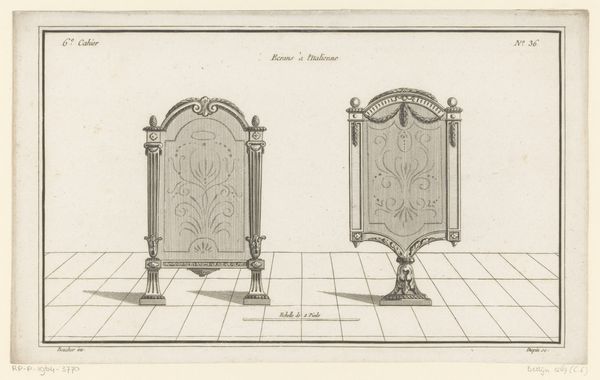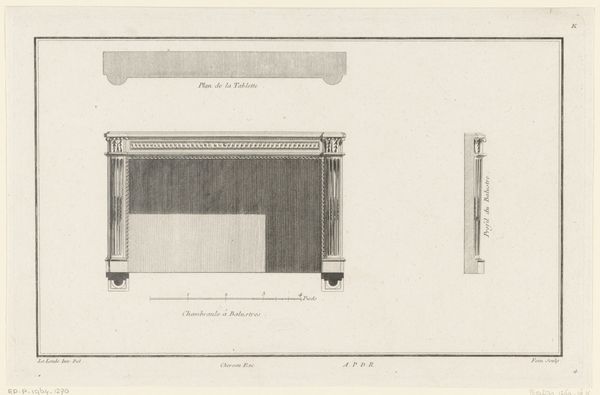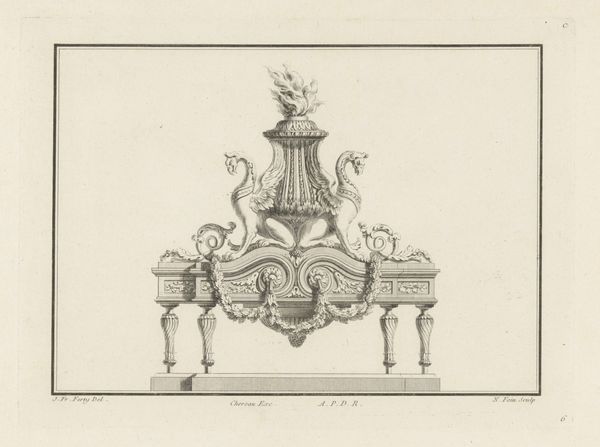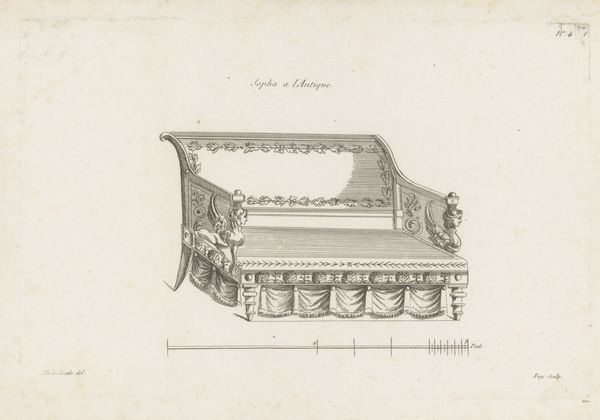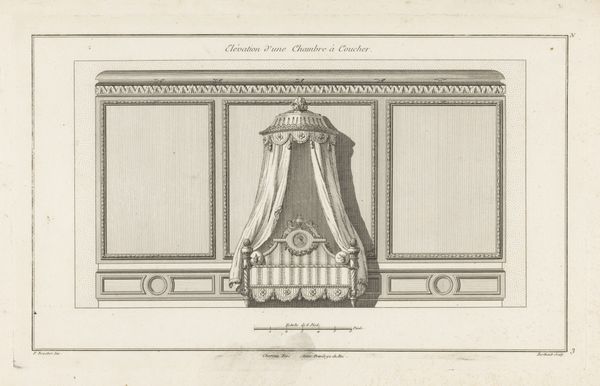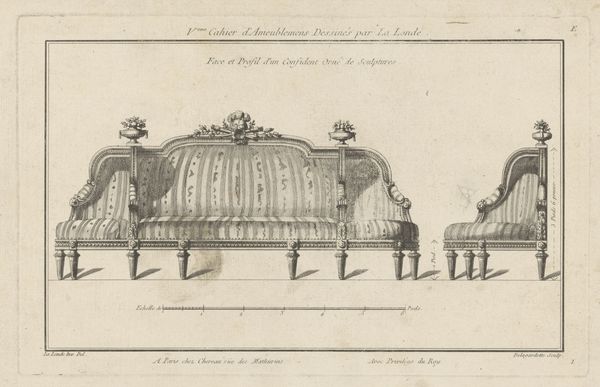
drawing, paper, engraving, architecture
#
drawing
#
neoclacissism
#
classical-realism
#
paper
#
geometric
#
engraving
#
architecture
Dimensions: height 167 mm, width 259 mm
Copyright: Rijks Museum: Open Domain
Curator: Today, we'll be looking at "Aanligbed," an engraving on paper by Jean Baptiste Fay, created between 1784 and 1796, currently held at the Rijksmuseum. Editor: It strikes me as so precisely rendered, yet cold, almost sterile. The gray lines leave little to the imagination and feel more like a blueprint than a celebration of beauty. Curator: The beauty lies precisely in the geometric rigor. Note the sharp, clean lines, the careful arrangement of the shapes. The piece exemplifies Neoclassical ideals—order, symmetry, and a return to classical forms. Look at the drapery and the repeating leaf pattern that borders the top: such disciplined symmetry. Editor: But is it not sterile? What of the politics of such stark luxury in the late 18th century? While revolution brewed in France, designs like these reinforced an aesthetic code of aristocratic privilege. How did such designs function as a symbol of power, particularly amidst social upheaval? Curator: True, one cannot ignore the sociopolitical climate. However, focusing purely on those elements risks overshadowing the aesthetic decisions Fay made. Notice the placement of the urns and how they flank the bed, adding balance. How can we truly grasp Neoclassical aesthetic choices without understanding this careful balance? Editor: I see them less as 'balance' and more as emblems of imperial Roman power being consciously deployed. We see this in contemporary portraits of women draped 'a la Grecque,' the semiotics point directly towards the fashioning of a new aristocracy which saw itself as the inheritors of a white, Western imperial project. It feels like propaganda for a highly selective, fictionalised past. Curator: I acknowledge your point about the piece reflecting political power structures, but I also value Fay's work as an example of highly skilled craftsmanship. Considering it strictly for what it might tell us about politics runs the risk of sidelining our encounter with the sheer quality of the draughtsmanship. Editor: Perhaps, but dismissing the broader narrative of power is its own kind of violence. Curator: Perhaps so. On that note, thank you for joining us in contemplating these difficult questions of value and aesthetic judgement!
Comments
No comments
Be the first to comment and join the conversation on the ultimate creative platform.
